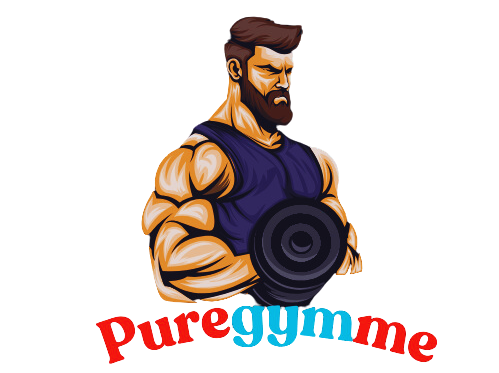Do Squats Work Abs? Unlock the Secret to a 6-Pack on Leg Day

As one of the most popular compound exercises, squats are renowned for their ability to target multiple muscle groups simultaneously. However, many people wonder if this powerhouse movement can truly help sculpt those coveted six-pack abs.
This article delves into the connection between squats and abdominal engagement, exploring the benefits of incorporating squats into core-strengthening routines. It examines how to maximize ab activation during squats and provides insights on integrating ab-focused variations into leg day workouts. By understanding the squat-ab relationship, readers can unlock the potential to build a stronger, more defined midsection while reaping the overall benefits of this fundamental exercise to lose extra weight.
The Squat-Ab Connection: Understanding the Basics
Squats are a powerful exercise that engages multiple major muscle groups, including the core. The core muscles, comprising the rectus abdominis, transverse abdominis, and obliques, play a crucial role in stabilizing the trunk and pelvis during squats. This engagement is essential for maintaining proper form and preventing injury.

When performing squats, individuals need to activate their deep abdominal muscles by imagining pulling their navel back into their spine . This action helps keep the spine and pelvis stable, reducing the load on the lower back. The core muscles work hard to stabilize and prevent the torso from tilting forward, especially when variations like goblet squats are performed.
Strong core muscles contribute to improved posture, reduced back pain, and a lower risk of injuries such as hip flexor strains and sports hernias . By incorporating squats into their routine, individuals can effectively target their abs while also strengthening other major muscle groups in the lower body, including the quadriceps, hamstrings, and gluteals .
Benefits of Squats for Core Strength
Squats offer numerous advantages for core strength and overall fitness. They engage multiple major muscle groups, including the core, which plays a crucial role in stabilizing the trunk and pelvis during the exercise. This engagement is essential for maintaining proper form and preventing injury.

Squats have the power to make a profound difference in athletic performance and injury prevention. They can improve vertical jump, agility, and straight-line acceleration during sprinting . Additionally, squats enhance muscle, tendon, and ligament strength, leading to superior durability and improved landing patterns that unload forces on the knees .

A strong core contributes to improved posture, reduced back pain, and a lower risk of injuries such as hip flexor strains and sports hernias [15]. Squats also increase metabolism over a longer period, boosting natural hormones within the body that contribute to weight loss. According to a study, squats burned an average of 35 calories per minute, the most of all exercises tested.
Incorporating Ab-Focused Squats into Your Routine
To maximize ab engagement during squats, individuals should focus on proper form and technique. When performing squats, it’s crucial to activate the deep abdominal muscles by imagining pulling the navel back into the spine . This action helps stabilize the spine and pelvis, reducing the load on the lower back.

For optimal results, beginners should aim for 12-16 challenging sets of 8-12 repetitions per week . More experienced individuals may need to incorporate 20 or more weekly sets to facilitate growth in strength and size . It’s essential to listen to one’s body and adjust the workout frequency based on recovery capacity and other core-intensive activities .
To complement squats and further strengthen the core, exercises such as back extensions, bird dogs, and Pallof presses can be incorporated. These movements target deep stabilizing muscles around the spine and improve lumbopelvic stability, enhancing overall core strength and squat performance .
FAQs about Do Squats Work Abs?
How often should I do squats to develop my abs?
To begin, it’s advisable to perform 2-3 sets of 15 repetitions every other day. As you build endurance and strength, you can increase this to 3 sets of 20 repetitions. For those looking for a challenge, try doing 100 squats daily for a month.
Are squats alone sufficient for developing abs?
While squats and deadlifts do aid in developing the core, they primarily target the posterior core muscles rather than the front abdominal muscles. To effectively target the front abs, you should also incorporate specific abdominal exercises like crunches and planks. However, squats and deadlifts are excellent for burning overall body fat.
Can doing squats help in toning my stomach?
Yes, squats can help in reducing belly fat and toning the stomach. This exercise targets not only the lower body muscles like quadriceps and glutes but also engages the abdominal muscles, making it a versatile workout for weight loss and muscle toning.
Will squats make my waist thicker?
No, squats and deadlifting do not inherently thicken the waist. Many bodybuilders who perform heavy squats and deadlifts maintain a trim waistline without experiencing an ‘expanding waist syndrome.’
Conclusion
Squats have proven to be a powerhouse exercise with a significant impact on core strength and overall fitness. By engaging multiple muscle groups, including the abs, squats not only help to build a stronger midsection but also boost athletic performance and reduce the risk of injuries. The key to maximizing ab activation during squats lies in proper form and technique, focusing on engaging the deep abdominal muscles throughout the movement.
To get the most out of squats for ab strengthening, it’s crucial to incorporate them into a well-rounded workout routine. Combining squats with other core-focused exercises can lead to improved stability, posture, and overall strength. Remember, consistency is key, and listening to your body will help you find the right balance of intensity and frequency to achieve your fitness goals. So, next time you hit the gym for leg day, keep in mind that you’re not just working your lower body – you’re also on your way to building those coveted six-pack abs.






